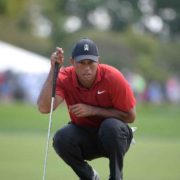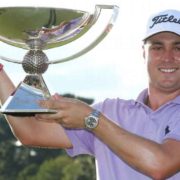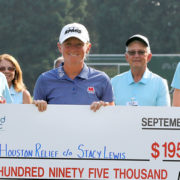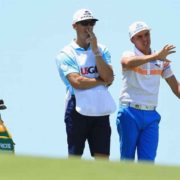For the first time in a long time, Tiger Woods looking forward to Masters week
AUGUSTA, Ga. — Tiger Woods was not on the grounds at Augusta National on Sunday, choosing to spend at least the early part of Easter at home before venturing north from Florida to a place he feared might never again be part of his competitive future.
Woods was here a little over a week ago to get a feel for the venue where he has four Masters Tournament victories, playing Augusta National for the first time since 2015, when he tied for 17th.
Each of the past two years, Woods, 42, came to the home of the year’s first major championship to take part in the Tuesday night champions dinner at the club, a bittersweet experience to say the least.
In both instances, the back issues that plagued him for a good part of the past four years prevented him from playing, and being on site made the pain even more acute.
“Brutal; it’s one of my favorite tournaments,” Woods said during a recent interview with ESPN.com. “To go and know that I can’t tee it up … it was harder than you might think. Way harder. When I got on the grounds, looking out there, knowing how to play the golf course, seeing the conditions, seeing the guys play … that was tough.”
Woods will be among the betting favorites when the Masters begins Thursday after a successful return to competition following 10 months away because of spinal fusion surgery on April 19, 2017.
In five tournaments on the PGA Tour, Woods has made four cuts, including a tie for second at the Valspar Championship and a tie for fifth at the Arnold Palmer Invitational, ramping up the hype even more.
That’s a long way removed from the past two Masters, when Woods in each case had made an effort to prepare for and play in the tournament, only to send along his regrets just days before tournament week.
“Of course, I’m always going to try,” Woods said when asked how seriously he considered playing the past two years. “But I really had a hard time walking. I knew I couldn’t swing, couldn’t play. And that made it even harder being there. If I wasn’t there, it’s a lot easier. But when I step foot on the property, knowing all the good memories and all the things I’ve done in the past on the golf course, it’s harder.”
Woods said the mood was somber two years ago as he realized that Arnold Palmer was in poor health. Wood and Palmer each won the Masters four times, trailing only Jack Nicklaus, who donned the green jacket six times.
Helping Palmer get seated at the dinner that night, Woods said, was worse than his own troubles. Palmer was unable to participate in the honorary starter ceremony the next morning with Nicklaus and Gary Player; Palmer died less than six months later.
Woods’ outlook was dire a year ago for a different reason. He wondered if he’d ever play again. At the time, he was just a few weeks away from having the spinal fusion surgery that required he go six months without swinging a club.
Nobody, most of all Woods, knew how he would emerge. Even as he was about to start swinging a club again, Woods said on Sept. 27, “I don’t know what my future holds for me.”
“There were plenty of dark thoughts,” Woods said. “Because I really couldn’t do it. That’s what makes this year so exciting. I’ve got a chance to really do some good playing. That hasn’t been the case for years.”
Woods visited Augusta National on March 22- 23, playing practice rounds each day, according to a post on his website. He had said following the Arnold Palmer Invitational that he would spend considerable time charting the greens and learning the course again.
As has been his custom, Woods used a local caddie named Jay Thacker — Augusta National requires one of its caddies to be employed during non-tournament weeks — and took his time making his way around the course.
His pre-tournament preparation has varied over the years. Woods said he has never played Augusta National — as would be his privilege as a past champion — other than in the weeks leading up to the tournament to get a feel for any changes made.
For several years, Woods made a habit of playing a Sunday practice round at Augusta National, when no spectators are around and just a handful of tournament participants and members are on the course.
But he didn’t do so the last time he played (in 2015), showing up on Monday — having taken the previous nine weeks off to address short-game issues — and then, surprisingly, tying for 17th. And he elected to skip Sunday this year, too.
No matter. Few know the golf course as well as Woods, who last won here in 2005 but has seven top-six finishes in his past nine starts. He also arrives healthy for the first time since 2013, when he tied for fourth.
That is why there is so much optimism, especially from Woods.
“Quite a shift,” Woods said on his website. “Six months ago, the odds were I wasn’t even going to play. I’ve been better with each week I’ve competed. A little more crisp. I’m starting to put the pieces together.”










